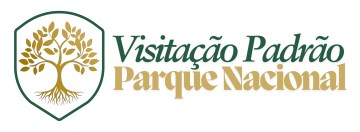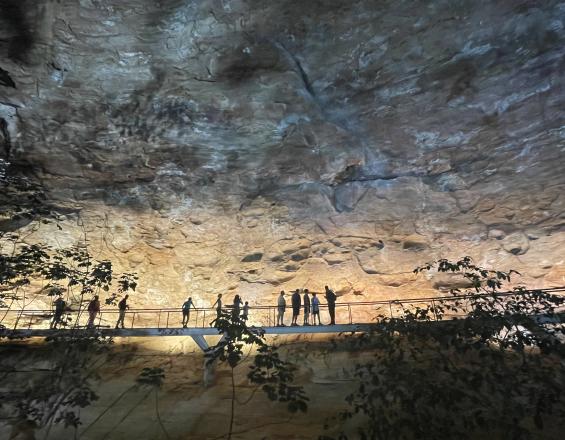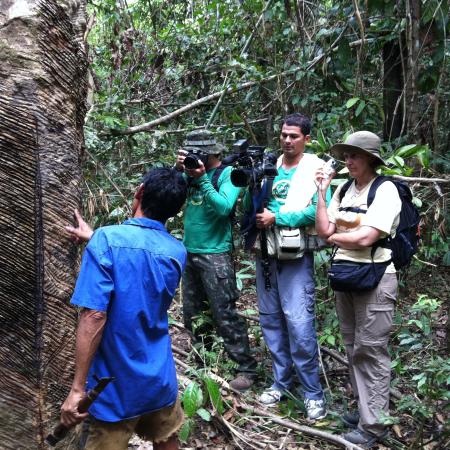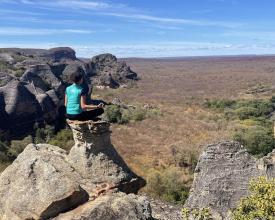
National Park Method for Ecotourism & Visitor Management

Unplanned visitation often causes environmental impacts, biodiversity loss, and reduced visitor satisfaction. At the same time, tourism holds strong potential to generate income, strengthen community resilience, and support conservation financing. The Solution applies the National Park Method for Ecotourism & Visitor Management, a practical method inspired by best practices in national parks planning, into private areas management. It has 3 principles: preserving nature, enchanting visitors, and generating income. In practice, the approach guides how to develop the Visitor Management Plan. Positive results include better organization of visitation, reduced environmental impacts, greater community income from ecotourism services, and improved visitor experiences. By combining technical planning with a strong focus on people and nature, the Solution demonstrates how tourism can be a driver of both conservation and sustainable development.
Context
Challenges addressed
Protected areas face multiple challenges from tourism. Environmental issues include soil erosion, trail widening, waste, and disturbance of wildlife caused by unmanaged visitation. Social challenges arise when local communities are excluded from tourism benefits, lacking training and recognition of cultural values and traditional knowledge. Economic problems include underdeveloped tourism potential, low visitor spending, and weak contribution to conservation financing.
The National Park Standard for Ecotourism & Visitor Management addresses these challenges by offering a structured method to organize visitation, reduce environmental impacts, build community capacity, and integrate local culture into visitor experiences. At the same time, it supports entrepreneurship and ensures that tourism generates income for communities while providing resources for conservation. This approach demonstrates how tourism, when well planned, can simultaneously preserve biodiversity, empower people, and strengthen sustainable development.
Location
Process
Summary of the process
The building blocks are designed to connect in a logical sequence, where each step provides the foundation for the next. Step 1 – General Assessment establishes the baseline by analyzing the area’s attractiveness and identifying supply, demand, and key influencing factors. This information enables Step 2 – Triple Profile - Strategic Definition, where the vocation of the area is clarified, a shared vision is created, and the most promising opportunities and visitor profiles are defined. Building on this vision, Step 3 – Tactical Growth uses the Recreation Opportunity Spectrum (ROS) to translate strategic goals into practical management choices, including zoning, activities, infrastructure, and regulations. Together, these blocks ensure that decisions are coherent: the assessment provides evidence, the strategy sets direction, and the tactical stage organizes experiences. By reinforcing each other, they create an integrated framework where conservation, visitor satisfaction, and community benefits align, leading to effective and sustainable ecotourism development.
Building Blocks
Step 1 – General Assessment
Step 1 – General Assessment
The success of an Ecotourism Project depends on the characteristics of the area and the context in which it is located. The Tourism Attractiveness Index (IAT) is the tool you will use to characterize your area and its context, that is, the Tourist Destination. This characterization will allow you to conduct a supply and demand analysis and understand your current and potential tourism attractiveness, which can vary along a scale.
By understanding your attractiveness and the factors that influence it, you will be able to define strategies to increase or better qualify it, and thus:
– Define or diversify your visitor profile
– Receive or increase the number of visits
– Add value and improve average visitor spending
– Improve seasonality
Enabling factors
Success of Step 1 – General Assessment depends on having updated baseline information about the area and visitation, and applying a clear methodological framework such as the Tourism Attractiveness Index (IAT). Engaging managers, communities and stakeholders ensures the analysis reflects both conservation and market realities. Technical capacity to assess supply and demand, integration with broader planning strategies, and establishing monitoring mechanisms are also key conditions.
Lesson learned
Key lessons learned highlight the importance of starting with clear, reliable data. Using the Tourism Attractiveness Index (IAT) provides structure, but its effectiveness depends on accurate baseline information and stakeholder input. We also learned that focusing only on environmental aspects is insufficient; integrating social and economic factors is essential to build a complete picture of tourism potential. For replication, our advice is: simplify technical terms to make the process accessible to non-specialists, and ensure regular feedback from communities and decision-makers. By doing so, the assessment becomes not only a diagnostic tool but also a process that builds ownership and guides realistic, shared strategies for ecotourism development.
Resources
Step 2 - Triple Profile – Strategic Definition
Step 2 – Triple Profile - Strategic Definition
With the Tourism Attractiveness Index defined, it becomes possible to set the fundamental principles and establish the foundations that will guide the entire development of the project. The main goal at this stage is to understand the vocation of the area and strengthen its positioning in the tourism market. This includes learning how to design authentic and memorable experiences for visitors, with a focus on enchantment, recreation, and environmental interpretation.
The process involves defining which Recreational Opportunities are most suitable and what types of Experiences should be prioritized to align with both conservation goals and visitor expectations. The principles of Environmental Interpretation are essential here, as they ensure that experiences are meaningful, educational, and engaging.
In practical terms, this step requires:
- Area Profile - Analyzing the challenges and opportunities of the area;
- Owner Profile - Creating a shared vision of the desired future;
- Visitor Profile - Defining the main visitor segments and profiles to be targeted.
By aligning vocation, opportunities, and interpretation, this step builds the strategic foundation for sustainable ecotourism.
Enabling factors
Success of Step 2 depends on having a clear Tourism Attractiveness Index as a baseline, along with stakeholder engagement to define the area’s vocation and market positioning. Strong facilitation is needed to build a shared vision and align conservation and tourism goals. Knowledge of visitor profiles, community values, and interpretation principles ensures that opportunities and experiences are both authentic and feasible, creating ownership and long-term sustainability.
Lesson learned
Key lessons learned from Step 2 show that defining the strategic direction of an ecotourism project requires balancing ambition with realism. A clear vision helps motivate stakeholders, but if goals are too broad or disconnected from local capacity, the strategy risks being unattainable. Active participation of managers, communities, and tourism actors is essential to identify the true vocation of the area and ensure ownership of the vision. Another challenge is overemphasizing infrastructure without first clarifying which experiences should be prioritized. It is also important to remember that this step operates at a strategic level—planning should not be frozen by too much detail, which belongs to later phases. Our advice is to invest in participatory workshops, apply interpretation principles, and create a phased vision to keep strategies practical and adaptable.
Step 3 – Tactical Growth
Step 3 – Tactical Growth
The ROS – Recreation Opportunity Spectrum is a tool that classifies opportunities for tourism and recreation by measuring the degree of intervention across three attributes: Biophysical, Sociocultural, and Management. Based on these indicators, it defines five Classes of Experiences: Pristine, Natural, Semi-natural, Ruralized, and Urbanized.
By combining the vocation of the area with these classes, managers can design a gradient of opportunities, ranging from sites with maximum naturalness, minimal human presence, and very low visitation (Pristine class), to areas with extensive infrastructure, altered landscapes, high accessibility, and strong human interaction (Urbanized class).
Using ROS allows planners to shape the Ecotourism Program by defining:
- Zoning
- Classes of Experiences
- Environments
- Activities
- Infrastructure
- Services
- Regulations
This tactical step translates the strategic vision into concrete management choices, ensuring that ecotourism development is diversified, coherent, and aligned with conservation priorities and visitor expectations.
Enabling factors
Success of Step 3 depends on having reliable baseline data and a clear strategic vision to guide tactical decisions. Stakeholder participation is crucial to define appropriate classes of experiences and ensure acceptance of zoning and regulations. Technical knowledge of the Recreation Opportunity Spectrum (ROS), combined with field assessments, helps adapt global standards to local contexts. Institutional support and long-term monitoring are also key to sustain implementation.
Lesson learned
The key condition for Step 3 is understanding that the most important factor is the experience you want to provide. Zoning, infrastructure, activities, and services are all defined in relation to this. Success depends on engaging stakeholders to agree on desired experiences, applying the Recreation Opportunity Spectrum (ROS) with reliable data, and ensuring institutional support and monitoring so that experiences remain authentic, feasible, and sustainable.
Impacts
Impacts
The Solution has demonstrated clear positive impacts across environmental, social, and economic dimensions.
Environmental impacts: By applying structured ecotourism standards, visitation is better organized, reducing pressure on sensitive areas and strengthening biodiversity conservation. In Brazil, eight private reserves have already implemented the methodology, conserving more than 2,400 hectares through zoning and clear guidelines that protected pristine forest zones and wildlife habitats.
Social impacts: Local people were empowered through training in guiding, interpretation, and hospitality, becoming proud ambassadors of their culture and knowledge. The project fostered stronger community engagement in conservation and created new roles for youth and women.
Economic impacts: Ecotourism activities generated significant income for property owners and surrounding communities. At Novo Encanto Seringal (Private Reserve in Amazon), revenues surpassed USD 65,000 in a single year, diversifying livelihoods and reducing reliance on extractive practices. Visitors also contributed to the local economy through food, crafts, and transport services.
Together, these impacts show how ecotourism—when structured with clear standards—creates a virtuous cycle where nature is preserved, communities thrive, and conservation financing is secured.
Beneficiaries
Local communities gained income and skills through guiding, crafts, and hospitality. Landowners improved management and conservation of 2,400 ha. Visitors enjoyed authentic experiences, while ecosystems benefited from reduced press
Global Biodiversity Framework (GBF)
Sustainable Development Goals
Story

This Solution was born from my lifelong mission to connect people to nature. For many years, I worked as a park ranger in the Amazon, where I witnessed both the challenges of unmanaged visitation and the transformative power of well-planned experiences. Visitors often left with a deep sense of wonder, respect, and commitment to conservation, and I realized that ecotourism can bring the transformation we need in the world—from the inside out.
One story that stays with me is Seringal Novo Encanto, a private forest property between Acre and Amazonas. By applying the principles of the Solution, the owners embraced their vocation for ecotourism and created experiences rooted in authenticity and care for the forest. In just one year, they welcomed more than 1,000 visitors from Brazil and abroad, generating significant income while conserving the Amazon landscape. The project also empowered local people, who became proud interpreters of their culture and guardians of biodiversity.
Moments like this illustrate the heart of the Solution: by structuring ecotourism with clear standards, we create opportunities where nature is preserved, communities thrive, and visitors are enchanted. It is through these connections that conservation becomes real, lasting, and inclusive.








